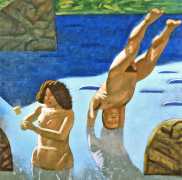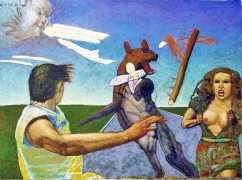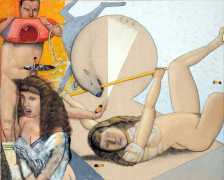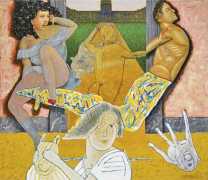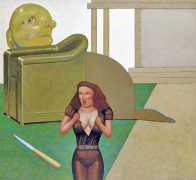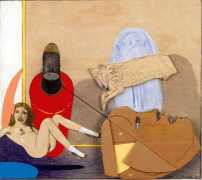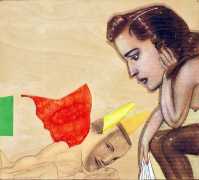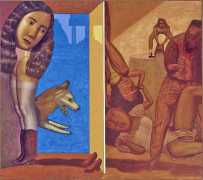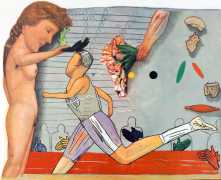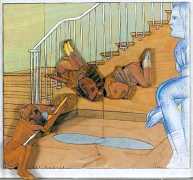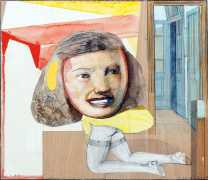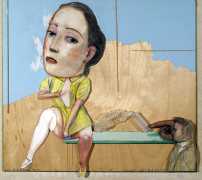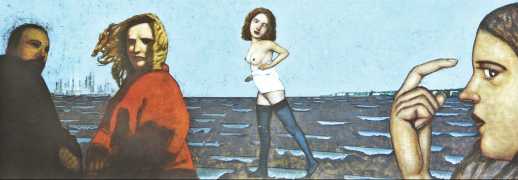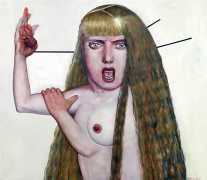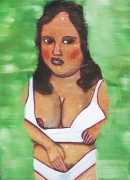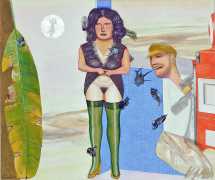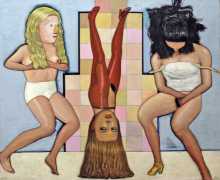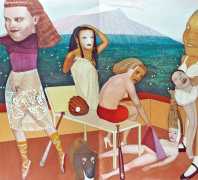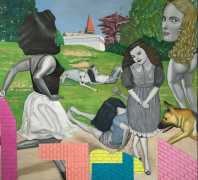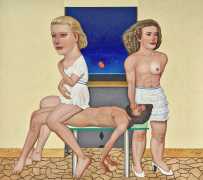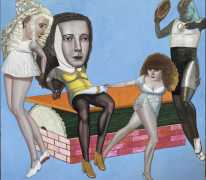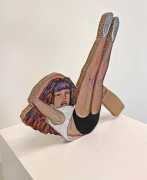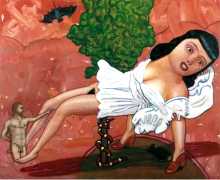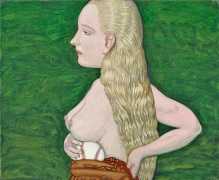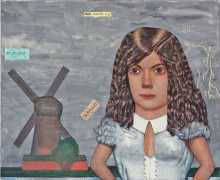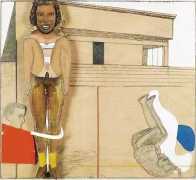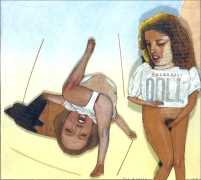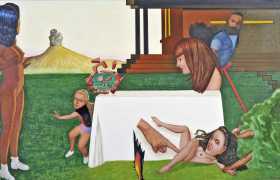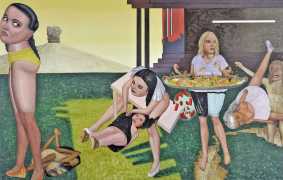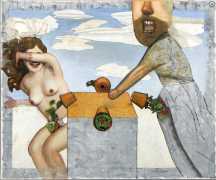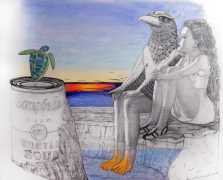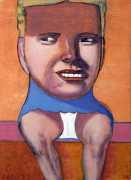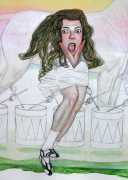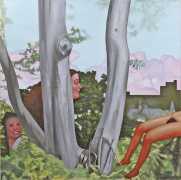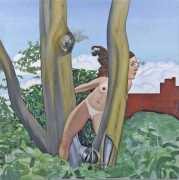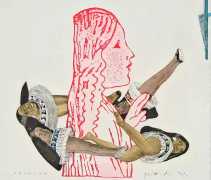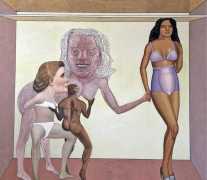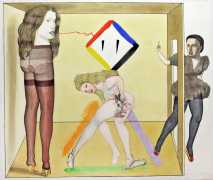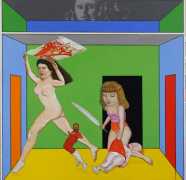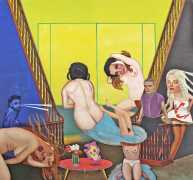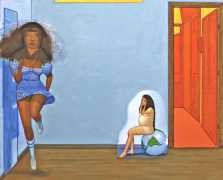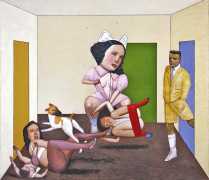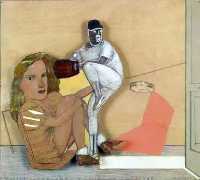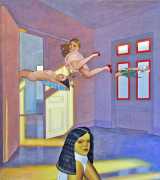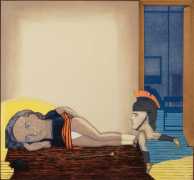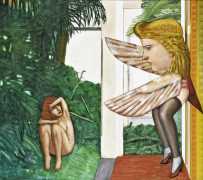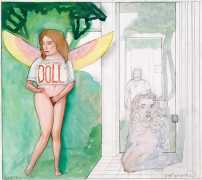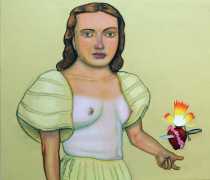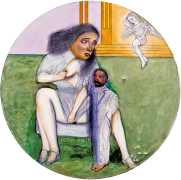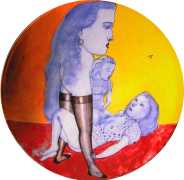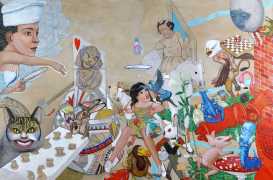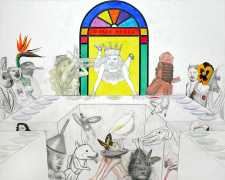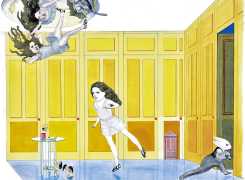
In early 2010 the Bon Vouloir gallery in Mons in the south of France staged a solo exhibition of Andrea’s work titled D’ailleurs (Moreover); the catalogue for the exhibition includes this insightful introduction:
Pat Andrea’s paintings are not easy to get into. They are heterogeneous surfaces, pencil figures, rigid postures, figures of different sizes, coloured architectural elements. They seem like mythological scenes, halfway between the resurgence of old scenes constantly replayed identically and the emergence of new fragments of myths. They are very illustrative, very narrative, and at the same time very fragmented, rather like in certain surrealist tendencies where everything can be associated with anything. But here the elements are linked, knotted, not just a simple wandering of the imagination. In what sense should we understand the aesthetics of myth in these images? In its deep sense, as defined by Lévi-Strauss, the myth has the function of describing reality, explaining it and justifying it in the eyes of the inhabitants of a singular culture. Moreover, a myth is not reducible to a simple story, it is also an ‘anthropological knot’ intertwining symbolic dimensions, with forms specific to the imaginary production, praxis and modes of relation to reality. A myth articulates in an inseparable way a series of stories with processes, without there necessarily being a one-to-one relationship between them. Faced with this kind of representation, a multitude of meanings can be imagined without ever being certain of following the right thread.
When asked about the source of his ideas, Andrea has written ‘I paint emotions, intuitions, things that I can pluck out of the air. Through my paintings, I open the doors to my subconscious. And I have no control over it. My paintings don’t illustrate a preconceived story, they only come into being when I paint them.’ He describes art as a reflection of society, culture and self, of the often subconscious interactions between people, often involving erotic fantasy.
It is not surprising that Andrea includes themes and inspirations which he has returned to several times, including the links between sexuality and religion, and the magical realism of Alice in Wonderland, on which he based a series of 48 paintings illustrating the works of Lewis Carroll which were exhibited in the exhibition hall of the Château de Chenonceau in the Loire Valley in the summer of 2007.





